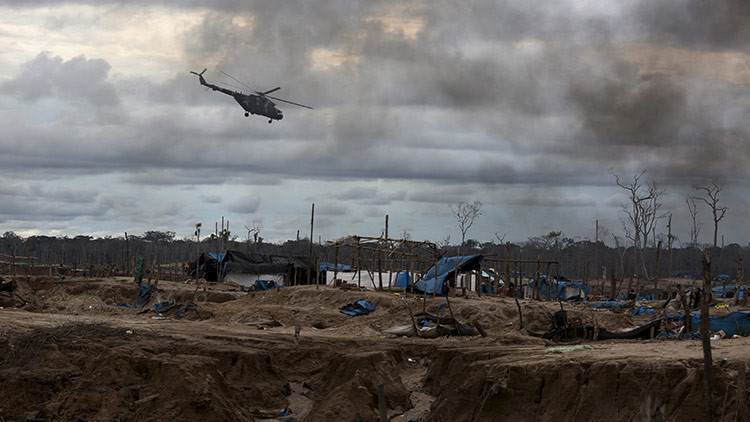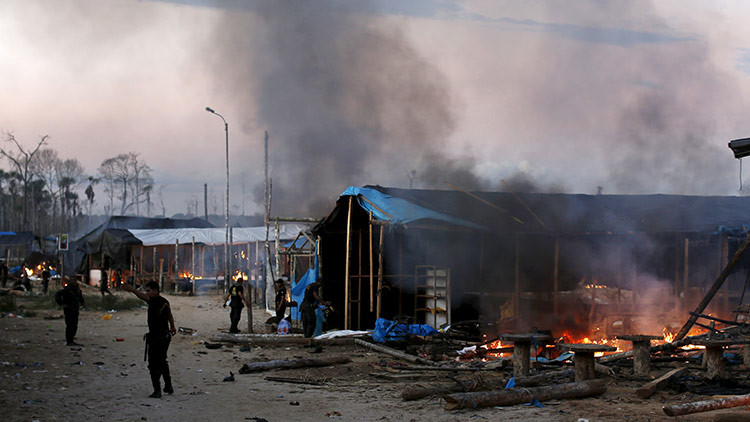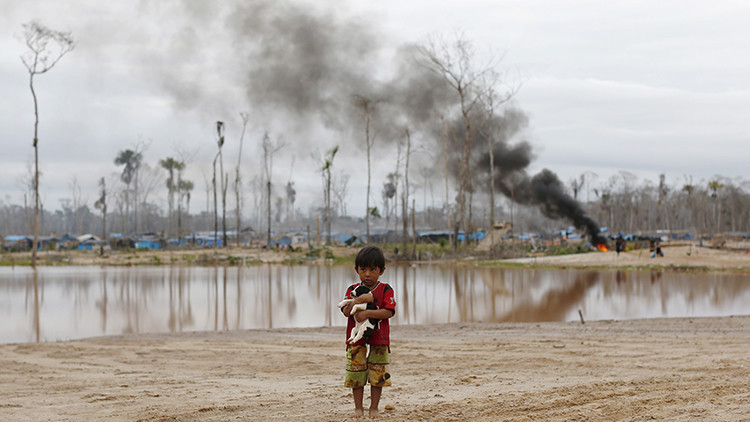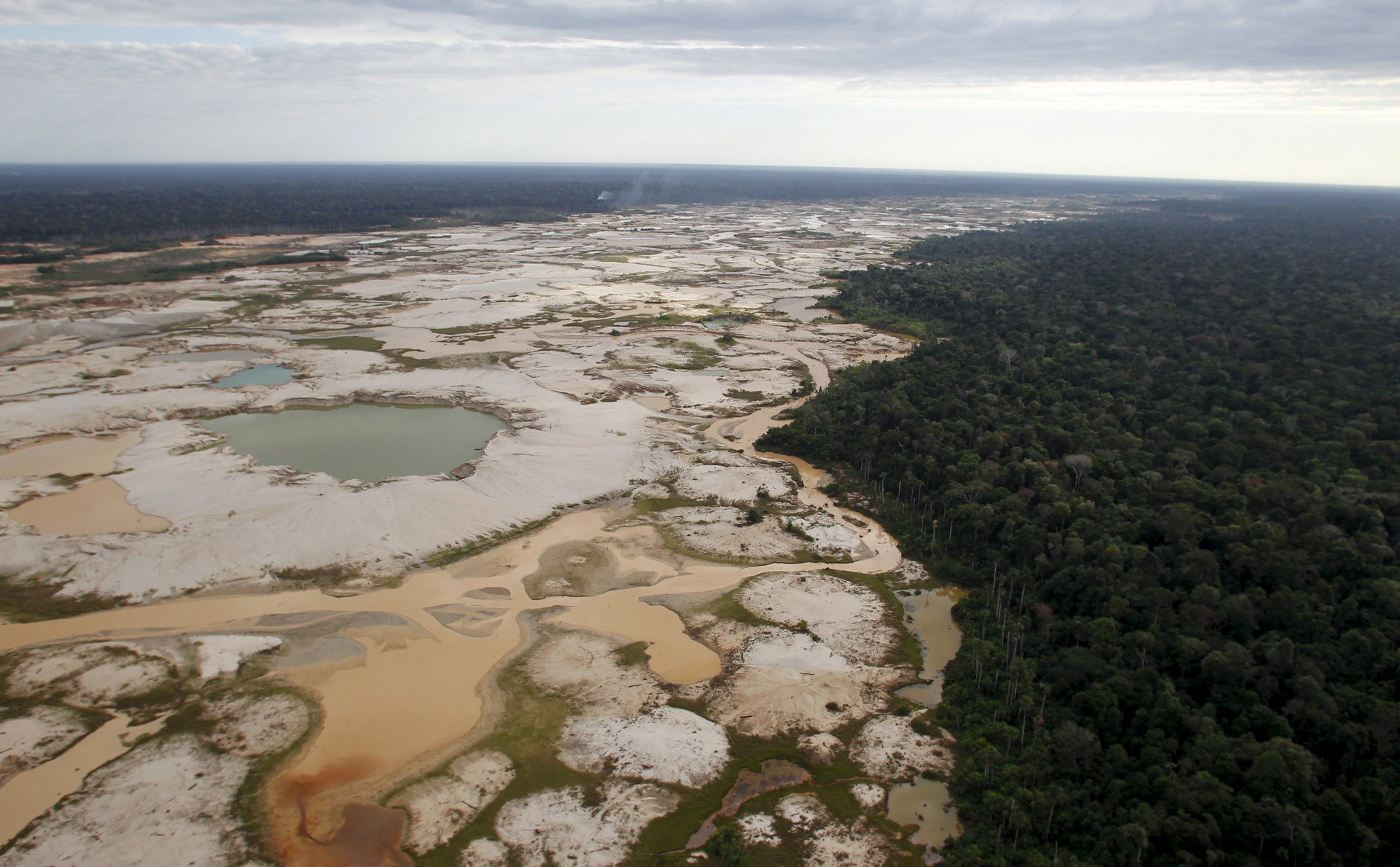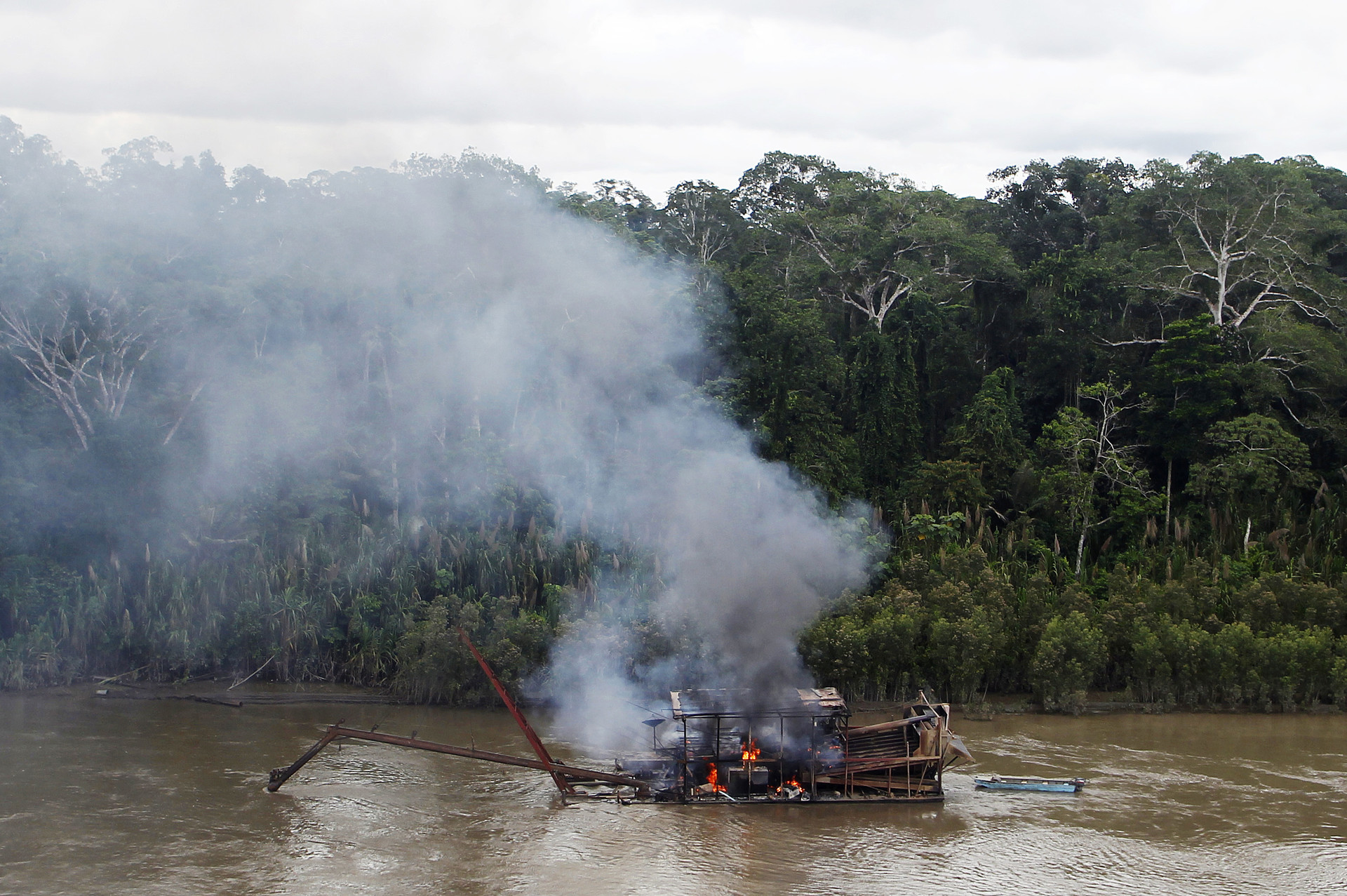Gold mining’s association with poor health and environmental damage has been unearthed over the years - but it’s still something many of us know little about.
“People have heard about ‘blood diamonds’, but not many realise that their gold could be responsible for one of the world’s top toxic threats – mercury,” says Richard Fuller, the President of Pure Earth – a New York-based charity that helps to clean up pollution in the poorest communities in developing countries that are affected by toxins.
Mercury poisoning can cause many unpleasant symptoms including brain malfunction, slurred speech, memory loss and loss of balance.
Artisanal small-scale gold mining is the largest source of human-caused mercury pollution in the world (even more than the burning of fossil fuels), according to the International Development Research Centre (IDRC).
Gold has long been coveted. But as our lust for the material goes unabated the industry has been steeped in accusations of exploitation, child labour and poor wages.
In turn, artisanal and small-scale gold mining (ASGM) has attempted to provide an ethical overhaul by implementing hallmarks for Fairtrade and Fairmined gold to guarantee a more ethical process.
And now a spotlight has now fallen on mercury-free gold – and it’s jewellery designers who are helping to lead the way.
Miner in Burkina Faso mining for mercury-free gold.
One such designer is Kimberly McDonald, a fine jewellery designer based in New York City, US. From gemstones to diamonds and metals, she consistently demands traceability for every material she uses within a piece of jewellery.
“In this market it is no longer enough to have a beautiful one-of-a-kind product,” she told HuffPost UK.
“People want to feel comfortable with the knowledge that what they spend their money on does not come at a larger cost to the planet.
“As a brand, Kimberly McDonald could not knowingly produce pieces that originate from something that is destructive to the environment.
“We also have seen increasing interest from our clientele about how the materials we use are mined and where our pieces are manufactured.”
Gold mines are mainly situated in developing countries – such as Nigeria, Burkina Faso and Indonesia – and they can be a dangerous environment to work in.
Due to a lack of high-tech equipment available in artisanal and small-scale gold mining (ASGM), the danger here can be even higher due to the use of toxic chemicals like mercury to extract the gold.
Mercury use in Nigeria.
“The largest source of global mercury emissions comes from artisanal gold mining, which produces up to a quarter of the world’s gold,” said Fuller.
“Because mercury travels, it is everyone’s problem. From poor miners and their communities who are directly poisoned, to families eating contaminated fish living half a world away.
“But the good news is that we are all part of the solution.”
The detrimental effects of mercury on the human body can be extensive.
“We’ve learned a lot about how this mercury effects us and our children from reported exposures to mercury over the last 100 years,” wrote physician Mark Hyman, in a blog hosted on HuffPost in 2011, entitled ‘Mercury: How To Get This Lethal Poison Out Of Your Body’.
“The symptoms and diseases these exposures have caused are varied and mimic many other conditions. Nervous system toxicity can cause erethism (‘mad hatter syndrome’) with symptoms of shyness; laughing, crying, and dramatic mood swings for no apparent reason; nervousness, insomnia, memory problems, and the inability to concentrate.
And the list continues: “Other neurologic symptoms may include encephalopathy (non-specific brain malfunction), nerve damage, Parkinsonian symptoms, tremor, ataxia (loss of balance), impaired hearing, tunnel vision, dysarthria (slurred speech), headache, fatigue, impaired sexual function, and depression.”
An amalgam of mercury mixed with gold.
The process involved in using mercury to extract gold has been linked to causing health issues for miners. According to a report by The Artisanal Gold Council (AGC), 10 to 15 million people are directly involved with ASGM.
However, sourcing a strong statistic of how many people are truly involved in ASGM hasn’t been easy.
“Estimating the number is not a simple task because it is largely an informal or poorly understood economic sector - often with little government contact and occurring in many remote regions,” explains Dr Kevin Telmer, executive director of Canada’s Artisanal Gold Council - who work to improve the health, economy an environment in AGSM.
“ASGM is a big and important livelihood. It’s a 20 billion dollar primary economy.
“It is practiced directly by 10 million people and supports a population of 100 million people in more than 80 countries.
“Every time we have had the opportunity to look more closely and collect more robust information, the estimate has risen.
“This is not because there are necessarily more and more people involved but also because of better information and understanding.”
Due to a lack of high-tech equipment, miners may use a dangerous method for extraction: the process of amalgamation – which is when gold comes in contact with mercury and the two mix to form a compound called an amalgam.
After the gold dissolves into the mercury, small gold particles are left. During this process, the burning of mercury releases harmful chemicals into the air which are not only toxic for humans, but also the environment and wildlife.
But changes are being made for a safer process.
“The biggest development to change the practice of using mercury to mine gold is the Minamata Convention on mercury - a UN Environment treaty signed by the world’s governments,” explains Dr. Kevin Telmer.
“Under the Minamata Convention, countries have agreed to introduce mercury-free technology to assist artisanal and small-scale miners to use alternative and more profitable techniques.
“This serves the double purpose of eliminating mercury pollution while still providing what is broadly recognised by world bodies as an important livelihood supporting around 100 million poor people in more than 70 countries.”
Shaking table introduced by AGC in Burkina Faso to recover gold without the use of mercury.
But with consumers – specifically millennials - demanding change, some jewellery designers are already actively sourcing mercury-free gold.
Kimberly McDonald is not the only designer who shares that pioneering mindset.
Pamela Love, a fine jewellery designer from New York City, has visited Suriname in South America to meet with their government and policy makers – who are working to restructure their gold mining industry.
“In Suriname, there were medium scale mines and small scale artisanal mines who were working in the rainforest and releasing mercury into the environment,” explained Love.
“The goal was, and is, to move these artisanal miners out of the virgin rainforest and into areas that are zoned for gold mining.
“They also are working to educate small-scale miners on the dangers of mercury in gold mining, to their health, as well as to the rainforest, and provide them with alternative methods of mining that are safer for them, the environment and ultimately yield more gold.
“This type of education is so important to our health, and our planet’s health.”
Artisanal gold produced in Burkina Faso.
A jewellery manufacturer – who wishes to remain anonymous - explained to HuffPost UK the need for traceability – from mine to manufacturer.
“To ensure that we are actually using mercury-free gold, as a manufacturer, we use suppliers that are independently certified,” the manufacturer explained.
″We work with vendors that have received certifications from their suppliers, verifying that they only source and manufacture metals and alloys from ‘DRC-Conflict Free’ mines or other domestic U.S. Sources.
“Mercury-free techniques to recover gold are safer for miners, their families and local communities.
“Mercury-free may also help miners market their gold at higher prices as awareness and consumer requests grow. Many are becoming ‘Fairminded-Certified’.
“Being a small manufacturer, we source our raw materials (precious metals, diamonds and gemstones) from suppliers that are certified. Design, assembly and finishing are done at our facility.
“As jewellers it is important for us to use more sustainable and ethical materials as it not only protects the environment, but also has a positive impact on the communities and lives of workers.”
Artisanal small-scale gold mining provides families with an opportunity to escape poverty. To completely remove or halt the process would be ineffective.
What miners need is access to better technology and working conditions. It is possible to create beautiful pieces of jewellery in a way that isn’t harmful to our planet and people.
“With Pure Earth, the UN and other organisations are training artisanal miners to go mercury-free, and with consumers and the industry demanding mercury-free artisanal gold, we will begin to see a difference,” concluded Fuller.



 "Soy como Pablo (Escobar) yendo a Ecuador para conseguir la coca“.
"Soy como Pablo (Escobar) yendo a Ecuador para conseguir la coca“.